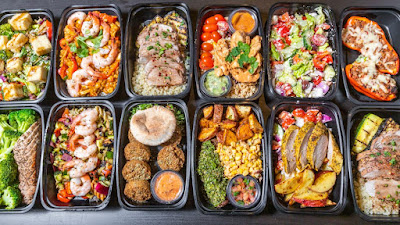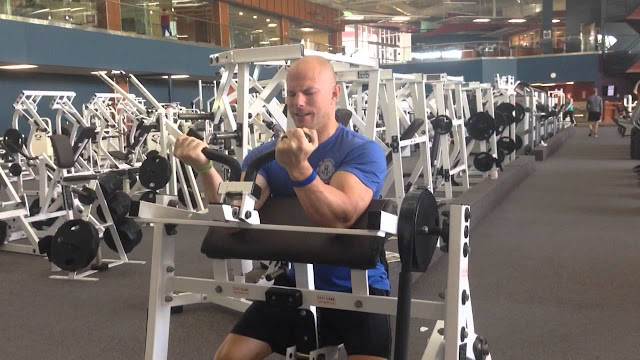How do I get bigger bicep peaks?
Convinced you’re doing the right exercises? Did you know that your workout form is everything when it comes to building bicep peaks? In this article, you’ll discover the most common mistakes people make when building biceps and how to correct them.
Building bigger bicep peaks may seem easy, but in fact, it's a lot harder than you think. There are many different factors that affect their appearance, such as genetics, body fat, type of training, and diet.
We have researched everything you need to know about building bigger bicep peaks by looking at scientific studies, training programs and nutrition regimes. We hope that this article can inspire you to build bigger bicep peaks!
Why are my biceps small?
While there are countless myths and misconceptions that surround building bigger biceps, the ultimate goal remains the same: arming yourself with the facts so you can start your training on the right foot.
Most importantly, remember to keep at it — consistency is key!
If you go to the gym regularly and eat well, you might expect to see your biceps pop. But if you're not specifically targeting the biceps with isolation exercises, they are always going to lag behind other body parts.
This is not really an issue for strength trainers and powerlifters. Biceps will grow to a certain extent through the heavy loads that they are pulling in deadlifts.
If you are focusing on aesthetics and bodybuilding, the size of the bicep is going to matter more to you than the strength of it. This is where a hypertrophy training split and isolation movements are going to be your friend.
If you want to prioritize bigger biceps, get off the treadmill and stay away from the power rack!
The anatomy of the bicep
If you want to bring up your bicep peaks, it is important to understand the anatomy of the muscle.
The bicep muscle is composed of two muscles - the short head and long head, which are separated by a tendon called the intermuscular septum. The short head is on the inner part of the muscle and it helps in flexing the elbow joint.
Without the long head of the bicep, you wouldn't be able to extend your arm out in front of your body for many tasks, especially when it comes to throwing a ball.
It does this by crossing over the shoulder joint from the upper arm and attaching directly above the elbow to the lower forearm.
This connection tilts the shoulder forward, which helps to draw your hand forward in conjunction with the short head of the bicep.
The short head of the bicep serves as a joint between three different muscle groups: the triceps brachii, the coracobrachialis, and the brachialis.
It is the dominant flexor of the elbow when the forearm is pronated, and it facilitates supination when the elbow is extended.
Which bicep head gives us the 'peak'
The short answer is, of course, both heads peak. You can see above that the peak caused by the short head hits first, about 120 degrees into flexion, followed by the long head, around 140 degrees.
Focusing your training on both heads along with regular tricep training and developing the deltoids will give you mass and definition in your upper arm.
How to grow bicep peaks
Through a combination of correct exercise selection, intensity, consistency and focus, you can achieve the bicep peaks you have always wanted.
Let's start with the basics. Biceps peaks come from having what is called a high peak bicep and that means drawing your bicep muscle into an elevated position.
That doesn't mean that the bicep is actually protruding through the skin, but rather it is in a better position to do so if the surrounding area can be maximized by getting leaner.
If you want bigger bicep peaks, you need to focus on three important training strategies during your workout.
First, you have to emphasize the biceps group during your weight training sessions.
Second, strict attention has to be given to rest periods in-between sets.
Finally, mass building supplements such as protein powder and BCAAs will help get you the most out of your weight training program.
Don't forget to bring those working muscles up to their peaks by providing them with ample blood flow.
Meanwhile, you may want to try an arm massage pad or a massage gun for a relaxing way of bringing more blood into your muscle tissue.
Exercise
The short answer to this question is that it adds mass. Muscles are one of the body's protein reserves and can only be built up by themselves. To gain muscle you have to have exercise.
As for specific exercises, determine what part of the arm you want bigger; for example the elbow flexors or the bicep or the forearm flexors.
From there, exercise those muscles regularly for about 8-12 reps with moderate weight.
Train these muscles to failure and use progressive overload so that they are constantly adapting and growing.
Nutrition
For those of you who want to build your bicep peaks or any other muscle mass for that matter, you should consume enough lean protein for the muscles to grow.
Proteins that have high biological value are milk and its products, tuna, eggs and meat. While proteins with medium biological value as soybeans.
Drinking Whey protein, whey isolate or a vegan whey drink after your workout is a quick and easy way to get essential protein into your body. Protein drinks can also be used throughout the day so that you can hit your recommended markers.
In addition to protein, also consume good fats, such as avocados and nuts, which play a role in slowing down digestion so that blood sugar levels do not increase dramatically.
This can stimulate the release of insulin leading to fat storage in the body.
Supplement
Supplements are an integral part of any bodybuilding routine. No matter how strict, nutritious, or consistent your diet and training might be, at some point, your body will simply fall short of the anabolic demands you place on it.
This is where supplementation comes in. Supplements provide nutrients that either 1) form a substrate for building tissue and increasing performance (protein, carbs, fats, creatine); 2) regulate health issues that can interfere with the production of optimal levels of force for training; and/ or 3) improve nutrient absorption through gut health (enzymes and vitamins).
Before you embark on any training plan, make sure you have these essential supplements...
- Protein - Use whey protein, whey isolate or vegan protein post-workout and throughout the day so that you can get your recommended daily amount for muscle growth.
- Multivitamins - It does not matter how good your diet is, you will still be missing some good vitamins and minerals from the foods that you eat. Invest in a good, slow-digesting vitamin for the maximum benefit.
- Fish oils - If you do not regularly eat fish, add fish oil capsules to your supplement cupboard. These are great for joint function, brain function, and injury prevention.
- BCAAs - These are the building blocks of our muscles. Adding BCAA powder to your water will help you before and during your workout with energy levels and muscle repair.
- Creatine - Creatine will help you focus at the gym and perform explosive, powerful lifts. It is cheap to buy and one of the most effective supplements a bodybuilder can have.
There are many other supplements that will help you achieve your goals, such as thermogenic, caffeine, mass gainers and green tea extract.
These are all going to be useful depending on your current condition and your goals. Take the time to do some research and read real reviews to see if they are worth the money.
The best bicep peak exercises
These are the best exercises for targeting your bicep peaks.
- Spider curls
- Preacher Curls
- High cable curls
- Incline curls
- Drag curls
Spider curls
Spider curls can be performed on an incline barbell bench or by using the back of a preacher bench. You are essentially keeping your arms in a strict downward position and curling a barbell up.
To get the best from spider curls, use an EZ bar and the back of a preacher bench. Opt for a moderate weight that you can curl with relative ease and focus on slow, controlled contractions of the bicep.
At the top of the movement, squeeze the bicep before slowly lowering the bar back down.
Preacher curls
Preacher curls are probably the best exercise for training the bicep. There is no room for cheating by swinging a weight and the bicep is totally isolated.
Most commercial gyms will have a preacher bench or a preacher curl machine. If you have access to a machine, you can quickly change the weight, making it great for drop sets or pyramid sets.
A good way to employ a preacher curl machine is to sit on the bench sideways and train one side at a time. Really twist the body around so that your working arm is almost behind you.
This allows for a great connection to the bicep and works it from an angle that no other exercise does.
High twin cable curls
High twin cable curls are great for developing the bicep peaks. Set your pins at head height, attach stirrups to the clips, and select a moderate weight.
You want to be able to curl the weight and hold the contraction for a few seconds so don't go too heavy.
Incline curls
Incline curls can be performed with dumbbells, but the best way to do them is with a double cable machine. Wheel your incline bench between the cables, set them to a low pulley, and attach the stirrup grips.
By using cables instead of dumbbells, you are getting more tension at the bottom and top of the movement.
If you angle yourself correctly, you should be able to curl the handle up and squeeze the bicep at the top of the movement on every rep.
Drag curls
Drag curls are a great bicep exercise for targeting the long head. They can be performed with a barbell, cable or on the smith machine.
It is similar to a standard barbell curl, but instead of keeping the upper arms in a rigid position, you are drawing them backwards as you're essentially dragging the bar up your torso.
Use a selection of these exercises within your routine and see your biceps pop.
How often should I train my biceps?
Ultimately, the frequency at which you want to train your biceps depends on a few different factors. If you are young and full of testosterone, you can probably get away with training them just twice a week and still get good results.
Older trainers should train their biceps 3-4 times a week for maximum hypertrophy.
The biceps are one of the quickest recovering muscles in our body. Unlike legs, they do not need 3-4 days to recover between workouts making them an easy target for hypertrophy.
The best hypertrophy workout programs will aim to train a muscle as soon as it has recovered from its previous workout. Leaving them unactivated for longer than needed is going to lead to missed growth opportunities.
Check out our free HyperGrowth training program where we hit the biceps 4 times every week! Click here for more information.
How do I avoid injury when training my biceps?
As long as you warm up properly, stay hydrated and don't exercise through pain, you should be able to avoid bicep injuries in the gym. Focus on slow, controlled movement, especially if this is your first time using weights.
A good way to make sure that you are fully warmed up and that there is blood in the muscles is to pyramid up to your working sets. Start with a light weight and go for 20+ reps. Gradually increase the weight and reduce the reps until you reach your working sets.
Do not go to failure on your warm-up sets; stop a few reps short so that you do not over-fatigue the muscle before its working sets.
If you experience any pain or discomfort, stop what you're doing immediately. Maintain awareness of your body as you work out.
Conclusion
The bicep peaks are glorious. The more dramatic and grand, the better. A good bicep peak, when attached to a well-trained arm, adds that bit of visual pop that adds a layer of depth to your physique.
Most people aspire for them, but few know how to get them—and even fewer can detail the process that helps bring about the protruding mass.
We hope that you find this guide useful.
FREE TRAINING PROGRAMS
Gymenix offers a selection of free training programs to suit all abilities and goals. Click on the links below for FREE access.

















